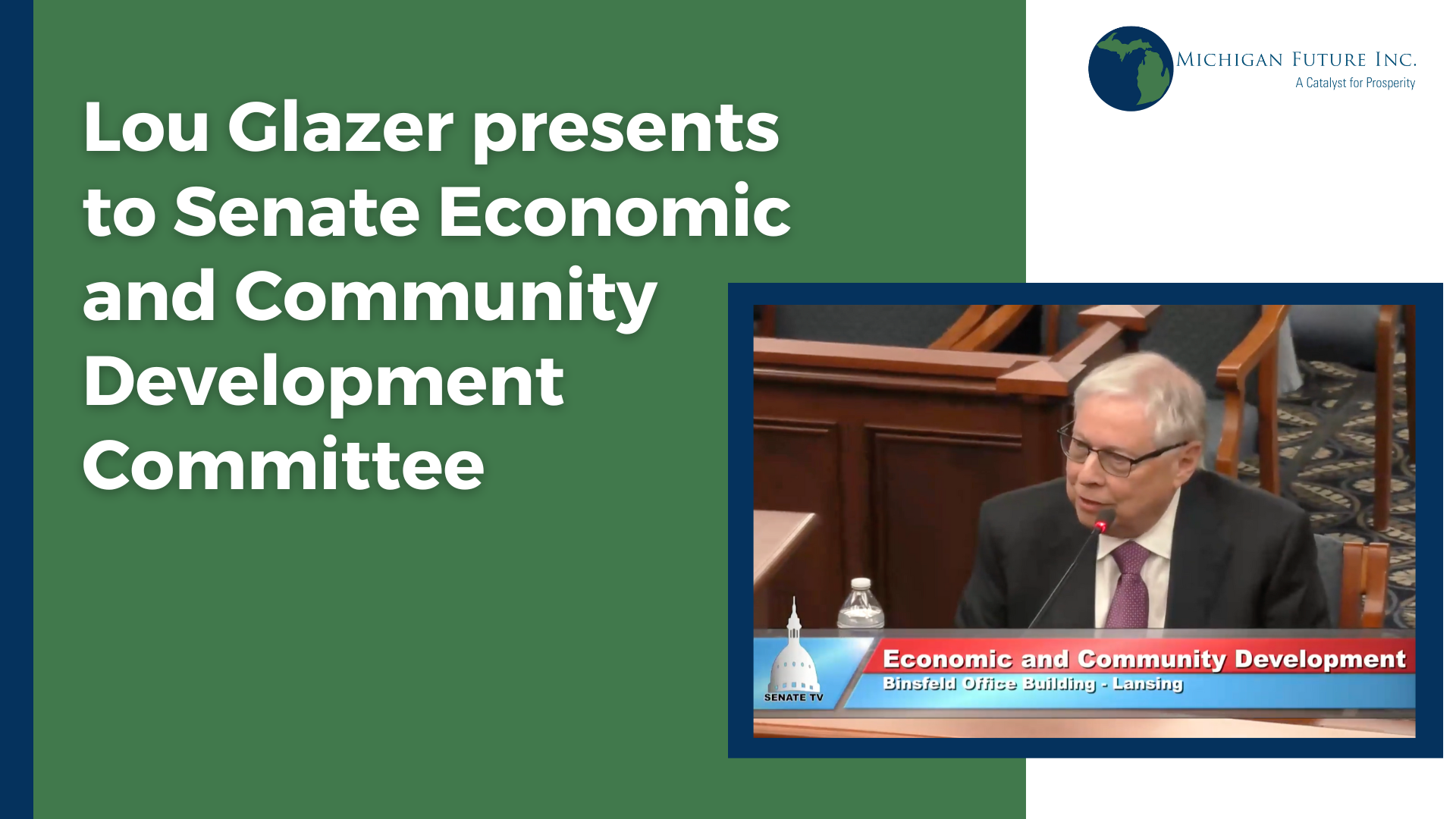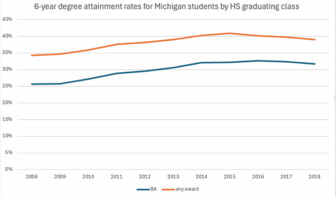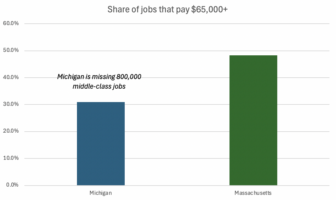Why spend so much time on Mississippi? Because Michigan needs to get on a new path. And one of the ways of identifying that path is to look at states that are doing well now and/or positioned to do well in the future.
So if per capita income growth rates are a good predictor of future prosperity – as many argue – we would need to consider those states as possible models for Michigan. Mississippi is one of those states with good income growth over the past two decades. But as we have seen in my three previous posts on Mississippi it turns out not to be a good predictor at all.
So if growth rates –even over as long a period as 1990-2008 – aren’t a very good predictor of future prosperity, what is? Our analysis is that its human capital. Its the best explanation of current income differences between states and we believe is likely to grow in importance as the economy becomes increasingly knowedge-based.
Job growth and good paying jobs are concentrating in those industries with the highest proportion of workers having a four-year degree or more. These high education industries are concentrating in those regions/states with the greatest concentrations of talent. Its why of the top ten states in college attainment, nine are in the top twelve in per capita income. So Michigan’s fundamental challenge is that we are thirty fourth in college attainment.
As we demonstrated in our latest posts its a state like Minnesota that is the model for Michigan to return to high prosperity. Minnesota is not only much more prosperous than Mississippi today but is much better positioned to be prosperous in the future because they are tenth in college attainment. The bottom line remains: either Michigan gets younger and better educated, or we will get poorer!






